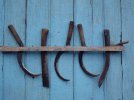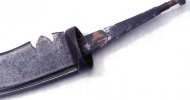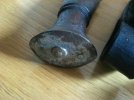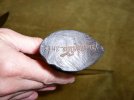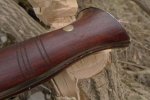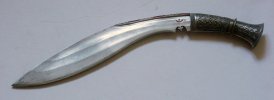- Joined
- Oct 27, 2012
- Messages
- 194
Just purchased a 15" sirupati. On the website the description includes "Light but still strong enough to do a heavy day's work." And in the sticky at the top of the forums, the sirupati is not listed as one of the models suggested for field use, or warranted for field (heavy chopping, log splitting, de limbing). Where should i draw the line as far as usage goes? I expected to be able to de-limb / chop / baton a little bit within reason (nothing over a couple inches in diameter) but i do not want to damage it. Just trying to get a grasp on what the intended purpose for this is, and what are its limitations?
I apologize in advance if i overlooked a thread or any information on this in my searches. Thanks for the help.
I apologize in advance if i overlooked a thread or any information on this in my searches. Thanks for the help.

